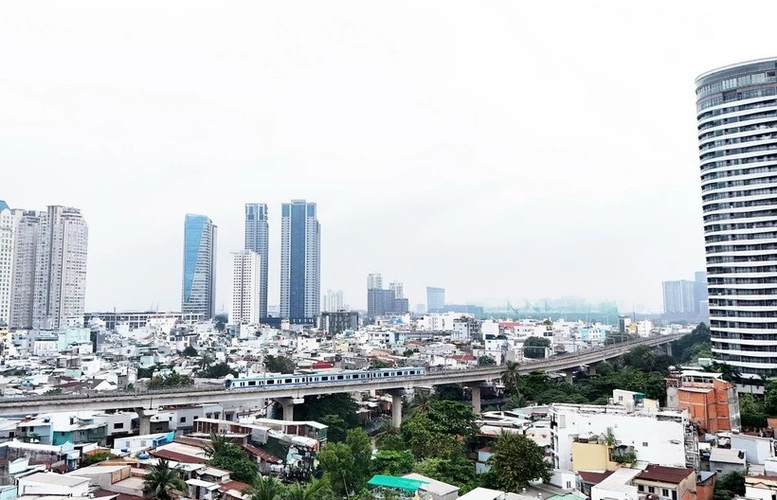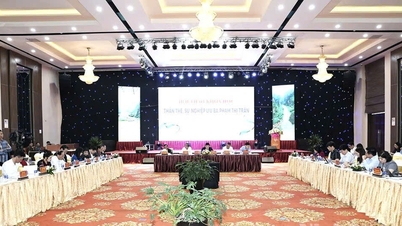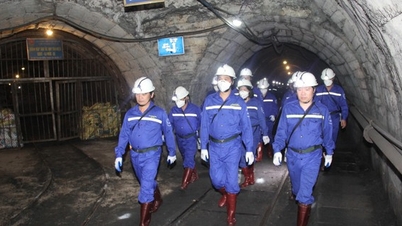
The National Assembly Standing Committee issued a Resolution on administrative unit arrangement in 2025.
This Resolution stipulates the arrangement of provinces and centrally-run cities (provincial-level administrative units) and the arrangement of communes, wards and towns (commune-level administrative units) in 2025 according to the resolutions and conclusions of the Central Executive Committee, the Politburo and the Secretariat on continuing to arrange the apparatus of the political system, arrange administrative units and organize two-level local governments.
The arrangement of provincial-level administrative units stipulated in this Resolution is the merging of provinces with provinces to form new provinces or the merging of provinces with centrally run cities to form new centrally run cities according to the arrangement orientation approved by competent authorities to reduce the number, increase the scale of administrative units, expand development space, and maximize the potential and advantages of localities.
The arrangement of commune-level administrative units stipulated in this Resolution is the establishment, dissolution, merger, division of administrative units, and adjustment of the boundaries of commune-level administrative units to ensure appropriate quantity and scale, the whole country reduces the number of commune-level administrative units by about 60% to 70% compared to the present, meeting the requirements of organizing local government at the commune level close to the people, operating effectively, efficiently, and effectively. In the case of arranging wards with administrative units of the same level, the administrative unit formed after the arrangement is the ward; in the case of arranging communes and towns, the administrative unit formed after the arrangement is the commune.
According to the Resolution, the provincial administrative units formed after the rearrangement must meet the standards on natural area and population size of the corresponding administrative units as prescribed in the Resolution of the National Assembly Standing Committee on standards of administrative units and classification of administrative units. In case the province is oriented to become a centrally-run city, the province formed after the rearrangement must basically meet the standards on natural area and population size of a centrally-run city.
The name of a provincial-level administrative unit formed after the rearrangement shall be named after one of the previously rearranged administrative units in accordance with the rearrangement orientation approved by the competent authority.
Orientation on standards of commune-level administrative units formed after the rearrangement
The Resolution clearly states that, based on the principles of administrative unit arrangement, the Provincial People's Committee is responsible for developing and selecting a plan to arrange commune-level administrative units suitable to the characteristics of rural, urban, island, mountainous, highland, border, plain, and ethnic minority areas and meeting the following orientations: (*)
a) Mountainous and highland communes formed after the rearrangement have a natural area of 200% or more and a population size of 100% or more of the standards of the corresponding commune prescribed in the Resolution of the National Assembly Standing Committee on standards of administrative units and classification of administrative units;
b) Communes formed after the rearrangement not covered by Point a and Point d of this Clause have a population size of 200% or more and a natural area of 100% or more of the standards of the corresponding communes prescribed in the Resolution of the National Assembly Standing Committee on standards of administrative units and classification of administrative units;
c) Wards formed after the rearrangement have a natural area of 5.5 km2 or more; for wards in centrally-run cities, the population is 45,000 or more; wards in provinces formed after the rearrangement in mountainous, highland, and border areas have a population of 15,000 or more; the remaining wards have a population of 21,000 or more;
d) The arrangement of commune-level administrative units under district-level administrative units in islands must ensure national defense and security requirements and follow the orientation approved by competent authorities.
The Resolution clearly states that in case of arranging 03 or more commune-level administrative units into 01 new commune or ward, it is not necessary to consider the orientation on the standards prescribed (*) above. (**)
In case the commune-level administrative unit formed after the rearrangement cannot meet the orientations on standards specified in (*) and does not fall under the cases specified in (**), the Government shall report to the National Assembly Standing Committee for consideration and decision.
According to the Resolution, the name of a commune-level administrative unit must be easy to read, easy to remember, concise, systematic, scientific, consistent with the historical and cultural traditions of the locality and supported by the local people; it is encouraged to name a commune-level administrative unit in order or according to the name of a district-level administrative unit (before the arrangement) with an order number attached to facilitate the digitization and updating of information data; the name of a commune-level administrative unit must not be the same as the name of an administrative unit of the same level within the scope of a provincial-level administrative unit or within the scope of a provincial-level administrative unit expected to be formed after the arrangement.
The total number of cadres, civil servants and public employees of the provincial-level administrative unit after the rearrangement shall not exceed the total number of cadres, civil servants and public employees present at the provincial-level administrative units before the rearrangement. The number of cadres, civil servants and public employees of the commune-level administrative unit after the rearrangement shall not exceed the total number of cadres, civil servants and public employees present at the commune-level administrative units before the rearrangement, excluding the number of cadres, civil servants and public employees at the provincial and district levels arranged to work at the commune-level administrative unit.
At the time of reorganization, the number of Vice Chairmen of the People's Council, Vice Chairmen of the People's Committee, and deputies of heads of affiliated agencies and units may be greater than the prescribed number. No later than 05 years from the effective date of the resolution of the National Assembly and the National Assembly Standing Committee on the reorganization of provincial and communal administrative units, the number and arrangement of leaders, managers, and the number of cadres, civil servants, and public employees of agencies and organizations in the administrative units after the reorganization shall be implemented in accordance with the regulations.
Source: https://baochinhphu.vn/nghi-quyet-cua-ubtv-quoc-hoi-ve-sap-xep-don-vi-hanh-chinh-nam-2025-102250415192414738.htm


![[Photo] Cultural, sports and media bloc at the 50th Anniversary of Southern Liberation and National Reunification Day](https://vphoto.vietnam.vn/thumb/1200x675/vietnam/resource/IMAGE/2025/4/30/8a22f876e8d24890be2ae3d88c9b201c)



![[Photo] The parade took to the streets, walking among the arms of tens of thousands of people.](https://vphoto.vietnam.vn/thumb/1200x675/vietnam/resource/IMAGE/2025/4/30/180ec64521094c87bdb5a983ff1a30a4)
![[Photo] Chinese, Lao, and Cambodian troops participate in the parade to celebrate the 50th anniversary of the Liberation of the South and National Reunification Day](https://vphoto.vietnam.vn/thumb/1200x675/vietnam/resource/IMAGE/2025/4/30/30d2204b414549cfb5dc784544a72dee)
















![[Photo] Performance of the Air Force Squadron at the 50th Anniversary of the Liberation of the South and National Reunification Day](https://vphoto.vietnam.vn/thumb/1200x675/vietnam/resource/IMAGE/2025/4/30/cb781ed625fc4774bb82982d31bead1e)




































































Comment (0)